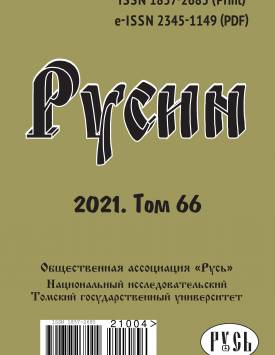The Sociocultural Image of Rusins-Rusnaks in the Works by Oleksandr Havrosh
The article analyzes the principles of creating a socio-cultural image of Rusins-Rusnaks in the novel Wandering People (2012) by Ukrainian writer and journalist O. Havrosh through the prism of the writer's artistic consciousness. The author studies the writer's mentative about the Rusin community, compactly living in Serbia, and the writer's emphasis on the uniqueness of the descendants of Carpathian immigrants, who managed to preserve and create a special ethnic group in new conditions. Outlining O. Havrosh's descriptive discourse in the in the travelogue, which consists of separate essays, the author analyses the specificity of the artistic and documentary description of the life of the contemporary 15,000 Rusin community in Serbia. The article focuses on the writer's artistic practices related to the reproduction of mentality, depiction of life, traditions, customs, beliefs, history, culture, and religion of Rusins-Rusnaks, who settled in Serbia more than 270 years ago and preserved their identity to our time. Having analysed the factors and circumstances of Rusin self-identification, the author emphasizes their uniqueness: being peaceful by nature and showing tolerant attitude to other cultures and religions, they have not assimilated with other European peoples for a number of reasons. The articles tells about the characters of the novel and their specific actions and deeds aimed at preserving and increasing Rusin traditions and customs. The analysis allows speaking about artistically interpolated processes of national and personal self-identification as of a socio-cultural phenomenon.
Keywords
Oleksandr Havrosh, travelogue, essay, Rusin community, identity, sociocultural image, phenomenon, writer's mentative, communicative strategy, Олександр Гаврош, роман-травелог, есей, русинська громада, ідентичність, соціокультурний образ, феномен, авторський ментатив, комунікативна стратегіяAuthors
| Name | Organization | |
| Shevchenko Tetiana M. | Odesa I.I. Mechnikov National University | shtn75@ukr.net |
References

The Sociocultural Image of Rusins-Rusnaks in the Works by Oleksandr Havrosh | Rusin. 2021. № 66. DOI: 10.17223/18572685/66/6
